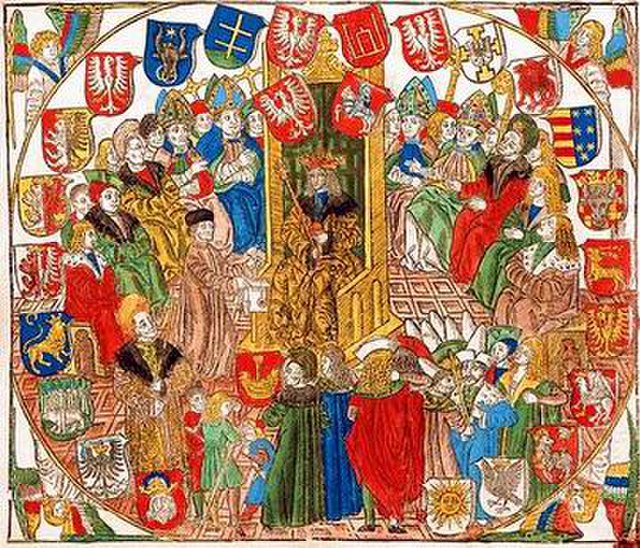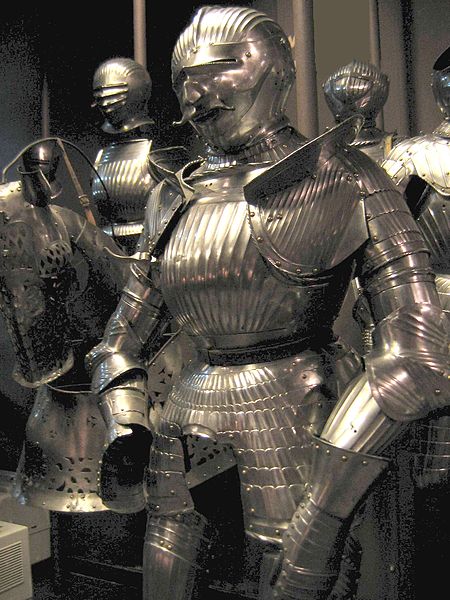Polish heraldry is the study of the coats of arms that have historically been used in Poland and the Polish–Lithuanian Commonwealth. It treats of specifically Polish heraldic traits and of the Polish heraldic system, contrasted with heraldic systems used elsewhere, notably in Western Europe. Due to the distinctive ways in which feudal societies evolved, Poland's heraldic traditions differ substantially from those of the modern-day German lands and France.
A leaf from the "Łaski's Statute" depicting the Polish Senate
Grzymała of comes Mroczek in 1262
The szlachta were the noble estate of the realm in the Kingdom of Poland, the Grand Duchy of Lithuania and the Polish–Lithuanian Commonwealth and, as a social class, dominated those states by exercising political rights and power. Szlachta as a class differed significantly from the feudal nobility of Western Europe. The estate was officially abolished in 1921 by the March Constitution.
Szlachcic sejmik representative Tadeusz Rejtan (lower right), with szlachta republican right of ending any Senate (Sejm) session and nullifying any legislation passed (Liberum veto), defying Russian, Prussian, and Austrian autocratic might to cease legalization of the First Partition of Poland, by halting the Partition Sejm's exit from the Senate chamber on 30 September 1773, in effect proclaiming, "Murder me, not Poland." Painting by Jan Matejko, 1866
A Polish peasant in stocks in a 16th-century Polish woodcut
Lech I
Polish Armor






